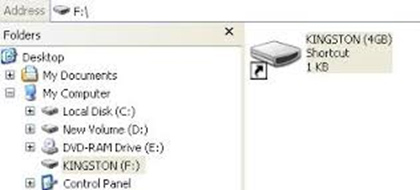|
A vast majority of the present-day computer infections have distinct commercial implications, where their entire operational loop pursues affiliate profit, as in the case of adware, or direct payments from victims in exchange
for undoing some nasty effects, such as file encryption outrageously performed by ransomware. In the midst of these income-driven malware landscape residents, the USB pendrive shortcut virus sticks out like a sore thumb. What
it does is it makes the icon for a removable drive as well as the files inside it be presented to the user as shortcuts rather than regularly accessible entities. For some reason, the bug tricks the operating system so that the
plugged-in media and possibly a number of internal directories aren’t recognized correctly, and this isn’t related to hardware drivers going invalid.

Setting the motivational facet of this issue aside so far, the shortcut USB pendrive malware causes serious problems to the infected user. Memory sticks are often used to back up important data, and the files becoming unavailable
is a thriller plot. This virtual miscreant usually spreads with free software installations and file downloads that have the bad code injected in them. Interestingly, the virus has been around for years and it can still circumvent
security software defenses – that’s because of frequent mutations and top-notch AV evasion techniques like the ones leveraged by computer worms.
Having entered a PC, the malady replicates itself to a number of system spots, thus instantly polluting the target OS. When the victims click the 1 or a few kilobytes large file shortcuts, they unknowingly perpetrate certain malicious
executables that vary from instance to instance. It can be an obfuscated identity theft process or a background installation of random malware. The fix in this scenario should be composed of two actions: one is removing the virus
proper, and the other is rectifying the mode of file rendering. The instructions below address both, so follow them and get system health restored.
Troubleshooting via Command Prompt
- Go to Start, select the Run option, type cmd and press Enter

- Assuming the infected drive name is D (substitute it with another letter if it’s different), type the following command: attrib -h -r -s /s /d D: \*.*

- Press Enter key to execute the command. This should do the trick for the normal file display.
|
